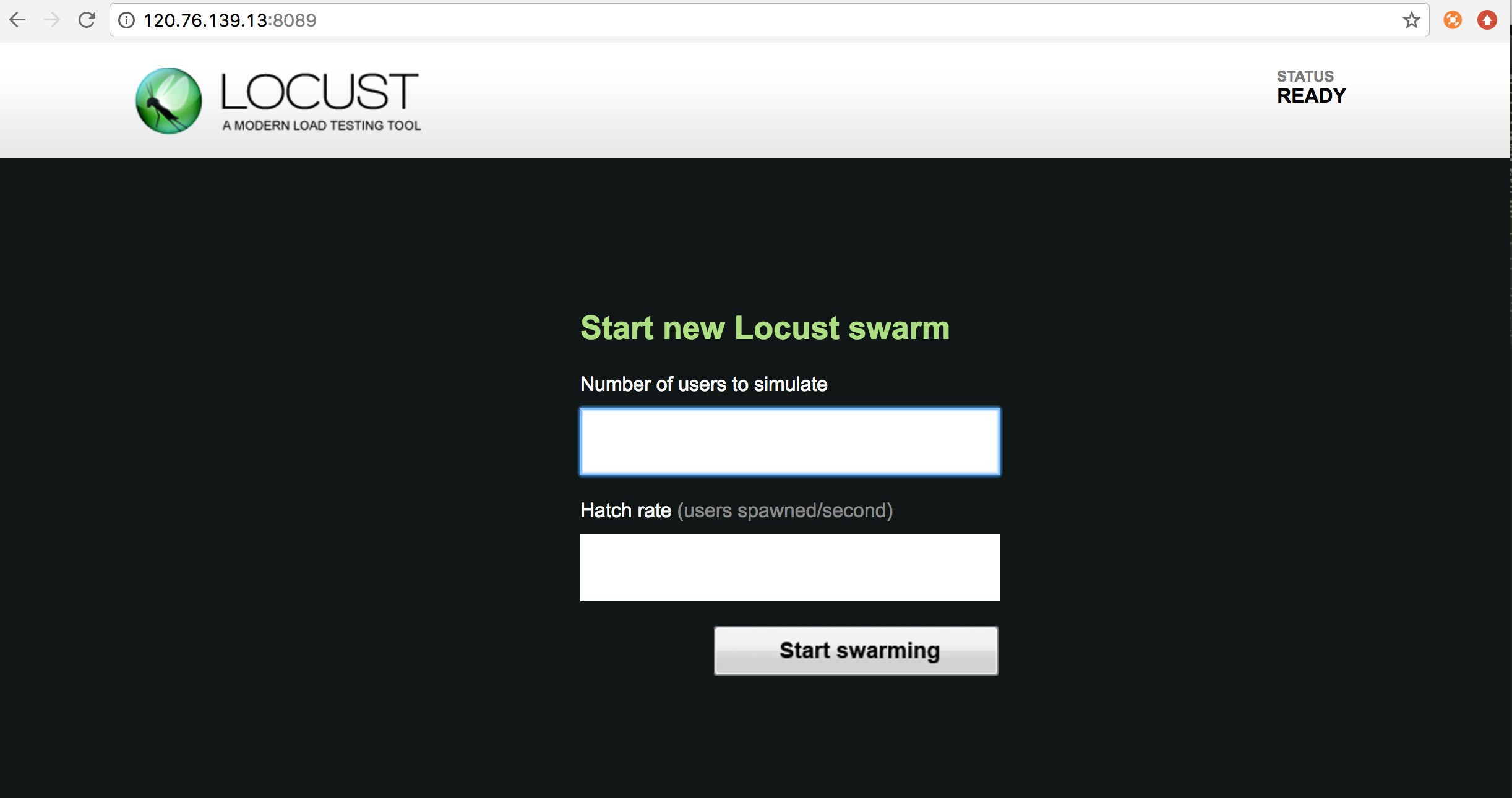Locust性能测试工具的安装及实际应用
一、安装Locust
安装Locust之前先安装的库:
gevent库:第三方库,gevent为python提供了比较完善的协程支持。使用gevent,可以获得极高的并发性能。
pip install gevent==1.1.2
flask库:Flask是一个使用 Python 编写的轻量级 Web 应用框架。
pip install flask==0.10.1
requests库:用python写过接口测试的朋友应该都不陌生,Requests 是用Python语言编写,基于 urllib,采用 Apache2 Licensed 开源协议的 HTTP 库。它比 urllib 更加方便,可以节约我们大量的工作,完全满足 HTTP 测试需求。
pip install requests==2.10.0
msgpack-python库:比JSON快10倍的序列化包。
pip install msgpack-python==0.4.2
six库:six 提供了一些简单的工具用来封装 Python 2 和 Python 3 之间的差异性。
pip install six==1.10.0
pyzmq库:Pyzmq是zeromq的Python绑定。
pip install pyzmq==15.2.0
安装库的过程中可能会遇到一些报错信息:
ReadTimeoutError: HTTPSConnectionPool(host=’pypi.python.org’, port=443): Read timed out.
解决方案:
更新pip版本到pip官网下载:https://pypi.python.org/simple/pip/
比如下载pip-9.0.1-py2.py3-none-any.whl
pip install pip-9.0.1-py2.py3-none-any.whl
如果还报错再执行:
pip –default-timeout=100 install -U pip
其他第三方库都安装完成后,接下来再安装locust:
pip install locustio
安装locustio库时可能会报错:
error:command ‘gcc’ failed with exit status 1
解决方案:yum install gcc python-devel
安装完成后,执行:locust–help
看到如下locust相关命令介绍,说明安装成功。
Usage: locust [options] [LocustClass [LocustClass2 … ]]
Options:
-h, –help show this help message and exit
-H HOST, –host=HOST Host to load test in the following format:
http://10.21.32.33
–web-host=WEB_HOST Host to bind the web interface to. Defaults to ” (all
interfaces)
-P PORT, –port=PORT, –web-port=PORT
Port on which to run web host
-f LOCUSTFILE, –locustfile=LOCUSTFILE
Python module file to import, e.g. ‘../other.py’.
Default: locustfile
–master Set locust to run in distributed mode with this
process as master
–slave Set locust to run in distributed mode with this
process as slave
–master-host=MASTER_HOST
Host or IP address of locust master for distributed
load testing. Only used when running with –slave.
Defaults to 127.0.0.1.
–master-port=MASTER_PORT
The port to connect to that is used by the locust
master for distributed load testing. Only used when
running with –slave. Defaults to 5557. Note that
slaves will also connect to the master node on this
port + 1.
–master-bind-host=MASTER_BIND_HOST
Interfaces (hostname, ip) that locust master should
bind to. Only used when running with –master.
Defaults to * (all available interfaces).
–master-bind-port=MASTER_BIND_PORT
Port that locust master should bind to. Only used when
running with –master. Defaults to 5557. Note that
Locust will also use this port + 1, so by default the
master node will bind to 5557 and 5558.
–no-web Disable the web interface, and instead start running
the test immediately. Requires -c and -r to be
specified.
-c NUM_CLIENTS, –clients=NUM_CLIENTS
Number of concurrent clients. Only used together with
–no-web
-r HATCH_RATE, –hatch-rate=HATCH_RATE
The rate per second in which clients are spawned. Only
used together with –no-web
-n NUM_REQUESTS, –num-request=NUM_REQUESTS
Number of requests to perform. Only used together with
–no-web
-L LOGLEVEL, –loglevel=LOGLEVEL
Choose between DEBUG/INFO/WARNING/ERROR/CRITICAL.
Default is INFO.
–logfile=LOGFILE Path to log file. If not set, log will go to
stdout/stderr
–print-stats Print stats in the console
–only-summary Only print the summary stats
-l, –list Show list of possible locust classes and exit
–show-task-ratio print table of the locust classes’ task execution
ratio
–show-task-ratio-json
print json data of the locust classes’ task execution
ratio
-V, –version show program’s version number and exit
二、使用Locust测试淘宝首页
1 #locust_taobao.py 2 3 #!/usr/bin/env python 4 #-*-coding:utf-8-*- 5 #author:@TT 6 7 from locust import HttpLocust, TaskSet, task 8 #定义用户行为 9 class UserBehavior(TaskSet): 10 11 @task 12 def taobao_page(self): #定义一个方法访问淘宝首页 13 self.client.get("/") 14 15 class WebsiteUser(HttpLocust): 16 task_set = UserBehavior 17 min_wait = 3000 #用户等待时间下限 18 max_wait = 5000 #用户等待时间上限
执行:
locust -f locust_taobao.py --host=https://www.taobao.com
提示:Starting web monitor at *.8089
Starting Locust 0.7.5
说明已经启动成功,浏览器输入:http://120.76.139.13:8089即可看到设置页面,并监控

Number of users to simulate:设置需要模拟的用户数量,这次只是为了演示,设置为10;
Hatch rate:每秒需要启动的用户数量,这次只是为了演示,设置为2;
点击『start swarming』,开始了性能测试:

Type:请求的类型;
Name:请求的url或者自定义的统计分组名字;
requests:当前请求的数量;
fails:当前请求失败的数量;
Median:中间值,一半的服务器响应时间高于该值,而另一半的服务器响应时间低于该值(毫秒);
Average:所有请求的平均响应时间(毫秒);
Min:请求最小响应时间(毫秒);
Max:请求最大响应时间(毫秒);
Content Size:单个请求的大小(字节);
reqs/sec:每秒请求的个数;
今天就先整理到这里,如果按照以上内容操作,对Locust的安装和性能测试的执行有了大概的了解。后续会不断更新……
了解更多请关注微信公众号:测试架构师




